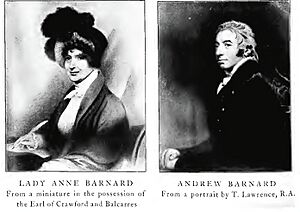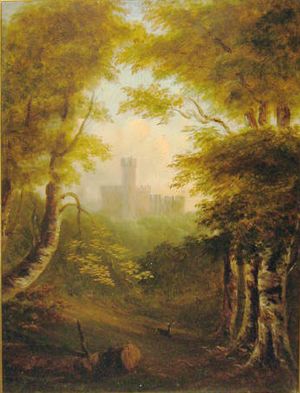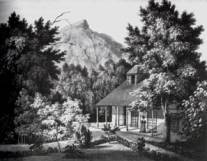Lady Anne Barnard facts for kids
Quick facts for kids
Lady Anne Barnard
|
|
|---|---|
 |
|
| Born |
Lady Anne Lindsay
12 December 1750 Balcarres House, Fife, Scotland
|
| Died | 6 May 1825 (aged 74) London, England
|
| Occupation | poet, visual artist |
|
Notable work
|
Auld Robin Gray |
| Partner(s) | Andrew Barnard |
Lady Anne Barnard (born Lindsay, 1750–1825) was a Scottish writer, artist, and a popular person in society. She wrote the famous song Auld Robin Gray. She lived in Cape Town, South Africa, for five years, and even though it was a short time, she made a big difference to the culture and social life there.
Contents
Growing Up in Scotland

Lady Anne Lindsay was born in 1750 at Balcarres House in Fife, Scotland. She was the oldest of nine children. Her parents were James Lindsay, the 5th Earl of Balcarres, and Anne Dalrymple.
Her mother hired a special teacher, called a governess, for Anne and her sisters. Anne later wrote that this governess was quite unique.
In 1793, Anne moved to London. There, she met and married Andrew Barnard, becoming Lady Anne Barnard. Andrew was 12 years younger than her. Lady Anne helped him get an important job as the colonial secretary at the Cape of Good Hope. At that time, the Cape was under British control.
Life in Cape Town
The Barnards traveled to the Cape in March 1797. Lady Anne stayed there until January 1802.
She wrote many letters to Henry Dundas, who was the secretary for war and the colonies. She also kept diaries about her trips into the country. These writings are now very important. They tell us a lot about the people, events, and social life at the Cape during that time.
Lady Anne was also known for hosting many parties at the Castle of Good Hope. She was the official hostess for Earl Macartney, a very important person.
Her amazing letters, journals, and drawings were put together and published in 1901. The book was called South Africa a Century Ago.
Later Years in London
In 1806, the British took control of the Cape again. Andrew Barnard was asked to be the colonial secretary once more. However, Lady Anne decided to stay in London instead of going back with him.
Andrew died in 1807. Lady Anne spent the rest of her life in London. She passed away at Berkeley Square on May 6, 1825.
Lady Anne's Creative Works

Lady Anne was a talented artist. Some of her paintings and drawings are included in her published books. These artworks show what life was like in the 1700s and 1800s.
She is most famous for writing the song Auld Robin Gray in 1772. A reverend named William Leeves later put music to it. The song was first published without her name in 1783. Lady Anne only said she wrote the words two years before she died. She told Sir Walter Scott in a letter in 1823.
An American composer, Florence Turner-Maley, used Lady Anne's words for her song "In a Garden Wild" in 1921.
Lady Anne's Lasting Impact
Lady Anne is remembered in several ways in Cape Town.
- A room in the Castle of Good Hope is called "Lady Anne Barnard's Ballroom."
- A road in the suburb of Newlands, where the Barnards lived, is named "Lady Anne Avenue."
- A carved sculpture of her is in the civic center in Claremont.
- The Barnards' old country house, called The Vineyard, is now part of a hotel.


